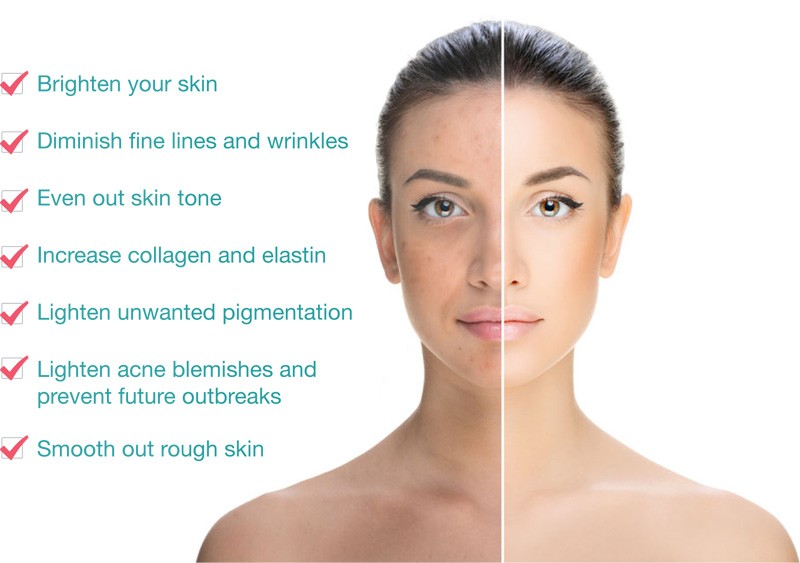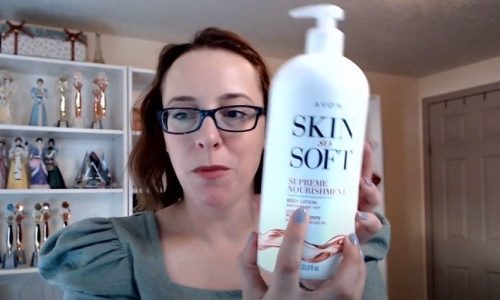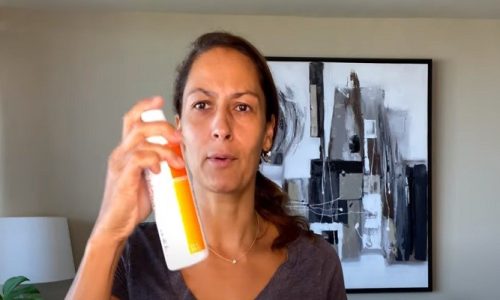Peeling skin does remove tan. When the skin peels, it sheds the outer, tanned layers, revealing the fresher, untanned skin underneath.
This can result in the lightening and fading of the tan. While the effectiveness of peeling in removing tan depends on factors such as the type of peel used and the depth of the tan, peeling skin can help in the natural fading of a tan.
In pursuit of a glowing tan, many individuals spend ample time under the sun or use tanning products. However, the aftermath of a tan often involves peeling skin. If you’re wondering whether peeling skin removes a tan, the answer is yes. When the skin peels, it sheds the outer, tanned layers, revealing the fresher, untanned skin underneath. This can result in the lightening and fading of the tan. While the effectiveness of peeling in removing tan depends on factors such as the type of peel used and the depth of the tan, peeling skin can help in the natural fading of a tan.
The Effects Of Sun Exposure
Spending time outdoors under the sun can result in various effects on the skin, including tanning and potential skin damage. In this section, we’ll delve into the mechanisms of skin tanning and explore the risk factors and complications associated with excessive sun exposure.
Mechanism Of Skin Tanning
When the skin is exposed to ultraviolet (UV) radiation from the sun, it triggers the production of melanin, a pigment responsible for the skin’s color. Melanin functions as a natural defense mechanism, absorbing UV rays to protect the skin from damage. As a result, the skin darkens, leading to the formation of a tan. However, prolonged or intense sun exposure can overwhelm the skin’s protective mechanisms, leading to sunburn and skin damage.
Risk Factors And Complications
Prolonged exposure to UV radiation can increase the risk of various skin complications, including sunburn, premature aging, and an increased likelihood of developing skin cancer. Individuals with fair skin, a history of sunburn, and a family history of skin cancer are particularly susceptible to the adverse effects of sun exposure. Additionally, certain medications and medical conditions can heighten the skin’s sensitivity to UV radiation, exacerbating the risk of sun-related skin damage.
The effects of sun exposure is critical in promoting skin health and preventing potential complications associated with tanning and excessive sun exposure.

Credit: www.visakhaskinclinic.com
The Process Of Skin Peeling
Natural Shedding Of Skin
Our skin undergoes a natural shedding process as part of its renewal cycle. The outermost layer, known as the epidermis, sheds dead skin cells regularly and replaces them with new ones. This shedding process helps to maintain healthy and fresh-looking skin.
Reasons Skin Peels
There are various reasons why the skin may peel, such as sunburn, dryness, certain skin conditions, or as a result of using certain skincare products such as chemical peels. Peeling can be a natural response to the skin’s effort to repair and renew itself, particularly after exposure to harsh environmental elements or irritants.
Can Peeling Remove Tan?
The process of peeling skin can be both a means of shedding damaged skin and a way to rejuvenate and reveal healthier skin beneath. But can it also aid in removing a tan?
Impact On Tanned Skin
Peeling can contribute to the gradual fading of a tan as the old layers of skin containing the tan are sloughed off, allowing the fresher, untanned skin beneath to be revealed. Tanned skin is essentially the result of the skin’s natural defense mechanism against the harmful effects of UV rays, leading to an increase in melanin production. As these layers peel off, they can take some of the tan with them, resulting in a gradual reduction in the appearance of a tan.
The Role Of Exfoliation
Exfoliation, including natural peeling or chemical peels, can expedite the removal of tanned skin layers. The exfoliation process helps in rapid regeneration of skin cells and facilitates the removal of damaged, tanned skin layers, thus aiding in the reduction of the tan.
Chemical peels, for instance, are specifically designed to remove damaged outer layers of skin to reveal the fresh, untanned skin beneath. They aid in accelerating skin renewal and can be effective in reducing the appearance of tan if performed by a professional and based on individual skin type and tan depth.
Managing Tan And Peeling Skin
When it comes to managing a tan and peeling skin, it’s essential to understand the relationship between the two and the best practices for maintaining healthy, glowing skin. While peeling skin is a natural process that helps remove damaged and dead skin cells, it also raises questions about how it impacts tanned skin. This article delves into the topic of whether peeling skin removes tan and provides valuable insights into managing both tan and peeling skin effectively.
Tips For Minimizing Tan Loss
Minimizing tan loss during the peeling process is a common concern for those looking to maintain their sun-kissed glow. Here are some essential tips to help minimize tan loss:
- Avoid excessive exfoliation: While it may be tempting to speed up the peeling process, excessive exfoliation can lead to faster tan loss. Gentle exfoliation is key to promoting a gradual and more even peeling process.
- Hydrate the skin: Keeping the skin well-hydrated can help extend the life of your tan. Opt for moisturizers and lotions that are specifically formulated to maintain and enhance tanned skin.
- Protect your skin from sun exposure: Protecting your skin from further sun damage can help preserve your tan during the peeling process. Use sunscreen with a high SPF to shield your skin from harmful UV rays.
Recommended Skincare Practices
Implementing the right skincare practices is crucial for managing tan and peeling skin effectively. Here are some recommended skincare practices to help you maintain your tan and promote healthy, radiant skin:
- Use gentle, hydrating cleansers: Opt for gentle cleansers that can effectively cleanse the skin without stripping away the natural moisture, helping to maintain your tan.
- Apply soothing and moisturizing products: After sun exposure and during the peeling process, utilize soothing and moisturizing products to nourish the skin and support the healing process.
- Seek professional skincare treatments: Consider professional skincare treatments such as chemical peels or laser therapy to address tan removal and promote skin rejuvenation under the guidance of skincare experts.
Precautions And Post-peeling Care
This section discusses the precautions and post-peeling care that are essential for maintaining healthy and radiant skin after undergoing a peeling treatment to remove tan.
Sun Protection Measures
- Always use a broad-spectrum sunscreen with a high SPF level to shield the skin from harmful UV rays.
- Avoid prolonged sun exposure, especially during peak hours, and wear protective clothing such as hats and sunglasses.
- Reapply sunscreen every 2 hours, or more frequently if swimming or sweating.
Recovery And Regeneration Of Skin
It’s crucial to prioritize skin recovery and regeneration following a peeling treatment to ensure optimal results and reduce the risk of complications. Here are some important measures to consider:
- Moisturize: Keep the skin well-hydrated by applying a gentle, soothing moisturizer to alleviate dryness and promote healing.
- Gentle Cleansing: Use mild, non-abrasive cleansers to cleanse the skin and avoid harsh scrubbing that can irritate the newly exposed skin layers.
- Avoid Direct Sun Exposure: Protect the skin from direct sunlight and wear protective clothing to prevent further damage.
- Avoid Harsh Chemicals: Refrain from using harsh skincare products or treatments that may irritate the sensitive, post-peeling skin.
Following these precautions and post-peeling care instructions can help the skin heal efficiently and maintain the benefits of the peeling treatment.
Frequently Asked Questions For Does Peeling Skin Remove Tan?
Does Your Tan Go Away If You Peel?
Yes, peeling can remove your tan as it causes the shedding of outer skin layers. The tan naturally fades due to the exfoliation process.
Does Peeling Solution Remove Tan?
Yes, chemical peels remove tan by exfoliating the skin and promoting regeneration of new skin cells.
Should You Self Tan If Your Skin Is Peeling?
It’s not advisable to self-tan if your skin is peeling, as it may result in a patchy appearance. Wait for a week until the top layer of skin cells has shed before applying the fake tan. Peeling skin means your skin is shedding, so it’s crucial to protect new skin from further damage and avoid sun exposure during this time.
Is It Okay To Tan Outside While Peeling?
It’s not okay to tan outside while peeling. Protect new skin from further damage. Peeling removes old skin cells, including the tan. Stay out of the sun to avoid further damage.
Can Peeling Skin Help Remove Tan?
Exfoliating peeling skin helps in the natural fading of a tan.
Conclusion
Peeling skin can help remove tan as it exfoliates the outer layer. While chemical peels can expedite the process, it’s important to protect the new skin from sun damage. Waiting for the peeling stage to be over before applying fake tan is advisable for better results.
Regular moisturizing can aid skin renewal and maintain a healthy tan.







